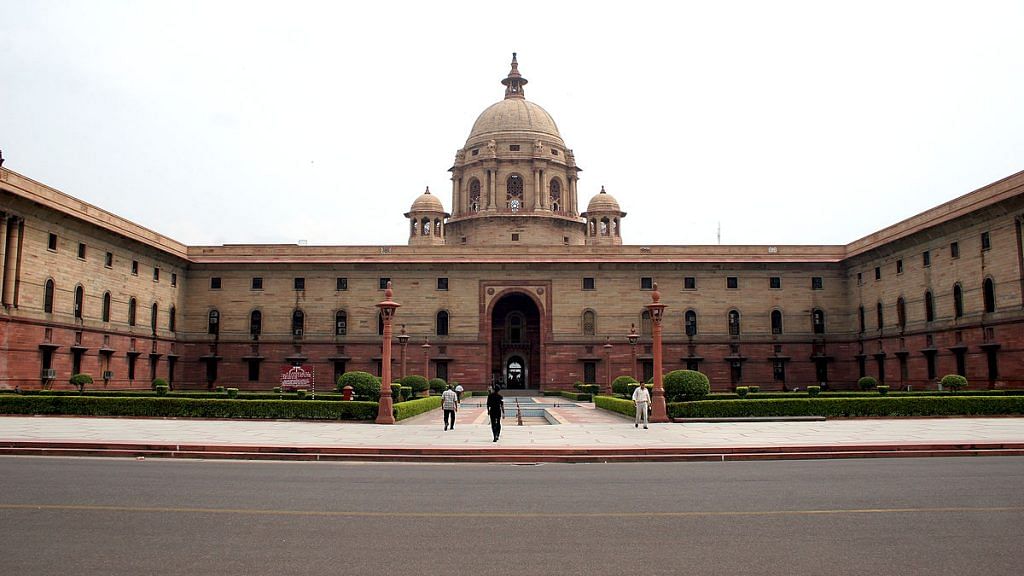The over-supply of information during Operation Vijay in Kargil has been in stark contrast to the denial stance adopted by the Narendra Modi government since the 2017 Doklam crisis broke. Lessons learnt on information warfare in 1999 have been put aside to reveal a new methodology of controlling the story from India’s military frontline, through silence and selective friendly leaks. To put this doctrine into practice, a new post of Director General of Information Warfare has been created under the Deputy Chief of Army Staff, Strategy.
This is essentially the elevation of the already functioning Additional Director General, Public Information (ADG PI). Its roots were in a small team put together by two sections of Military Operations and Intelligence directorates, working out of a South Block dungeon called Army Liaison Cell (ALC). The 1990s’ terrorism and insurgency fuelled the need for a non-attributable, but reliable, Army HQs address for journalists, including foreign media. Access was open to all credited journalists, and even some greenhorns cutting their teeth in defence reporting. A Colonel led the group of officers, until Op Vijay broke. I was witness to the emergence of this cell, its growth, and its operational utility during conventional and counter-insurgency operations.
The outstanding Lt Gen. Paramjit S. Sangha will be India’s first Deputy Chief of Army Staff (Strategy). He will function as the ‘single-point advice’ person to the Vice Chief of Army Staff (V-COAS) and will have Directors of General Military Operations, Intelligence, Perspective Planning and Strategic Communication reporting to him. Their inputs will then be collated to deliver ‘advice’ to the V-COAS. So, in effect, four Lt Generals will report to a slightly senior Lt General who will then sift through their inputs, and share it with yet another Lt General, albeit a little more senior. This reform at the Army HQs has been approved by the Union government.
Also read: Why Army wants a new Deputy Chief and Director General at its headquarters
More tinkering than reform
First of all, in the current scenario, information warfare has to be a tri-service effort, and the DG of Information Warfare should be responsible for handling dissemination from the three services. That is, after all, the stated objective of jointmanship and the purpose behind creating a Chief of Defence Staff.
All press reports, stemming from the same briefing, suggest that the mover behind this reform was the 2017 Doklam crisis. According to an Indian Express report: “The need for the creation of the single-point advice person for the Vice Chief was felt during the standoff with China in Doklam in 2017. Sources had said earlier that this was because everything was under different verticals, and several officers would provide similar inputs.” This reasoning defies imagination since those ‘several’ officers could still provide similar inputs to the Deputy Chief, and he, in turn, carry the same contents to the V-COAS. After all, if various Lt Generals are expected to render advice in a mobilisation scenario, as Doklam was, it is almost certain all would share similar views, a logical outcome of their training and experience.
So, if Doklam is being taken as the instigator of this reform, it doesn’t quite click because, by all accounts, the Army fulfilled its operational role in Doklam with suitable results. The subsequent losses in the area are not on account of the Army, but political diplomacy, and beyond the purview of this reform. When the functioning cannot be faulted, then changing structures is not reform but bureaucratic tinkering, which will not do any good for the Army HQs’ efficiency, however outstanding Lt Gen. Sangha may be. In the recent past, the Army HQs hasn’t really been found wanting during times of crisis or operational deployment.
The success, or otherwise, of Army HQs is directly proportional to the clarity of political directives, and the monies put on the table to achieve the targeted results. During far greater challenges, the Army HQs has achieved more with less, only because there was no political pussy-footing, and resources were made available as desired. The best example is Kargil and Operation Vijay, in sharp contrast to the current mobilisation in Ladakh, Operation Snow Leopard. The use of firepower is, of course, completely dissimilar between the two, but equally important is how vastly divergent information warfare was, and is being, applied in both scenarios.
Also read: China has an intelligence gathering architecture unlike any other
Facts on the ground
Back in the ALC, the swashbuckling Maj. Gen. Arjun Ray was brought in to handle the Kargil crisis from an information perspective. He had a psychological operations background from a foreign course, and understood its immense value, as also the methodology of achieving results. Responsibility was delegated to a few young Majors and Captains drawn from across the Army, with a target audience that was within India as well as across the border in Pakistan, and thereafter, the rest of the world. In fact, the initiative was taken by two officers, one from the Armoured Corps and the other from Signals. Then Chief of Army Staff Gen. V.P. Malik gave a broad perspective to the ALC, and it was implemented with operational and intelligence inputs from the concerning directorates. The simple formula worked well even in the most trying of circumstances.
Now when the challenges are far less, capability somewhat greater, and the Modi government in an information denial mode, the new Deputy Chief of Strategy has a tough task ahead of him. Particularly since a lot more information is available to all known adversaries outside of India, as well as friendly countries. Those being denied information are only the citizens, while foreign media gets briefed, covertly, as the ALC once did. Psychological operations aimed only at the domestic audience don’t alter facts on the ground, nor the adversaries’ willingness to fight, which must always be the primary military objective of information warfare.
The author is a Congress leader and Editor-in-Chief of Defence & Security Alert. Views are personal.
